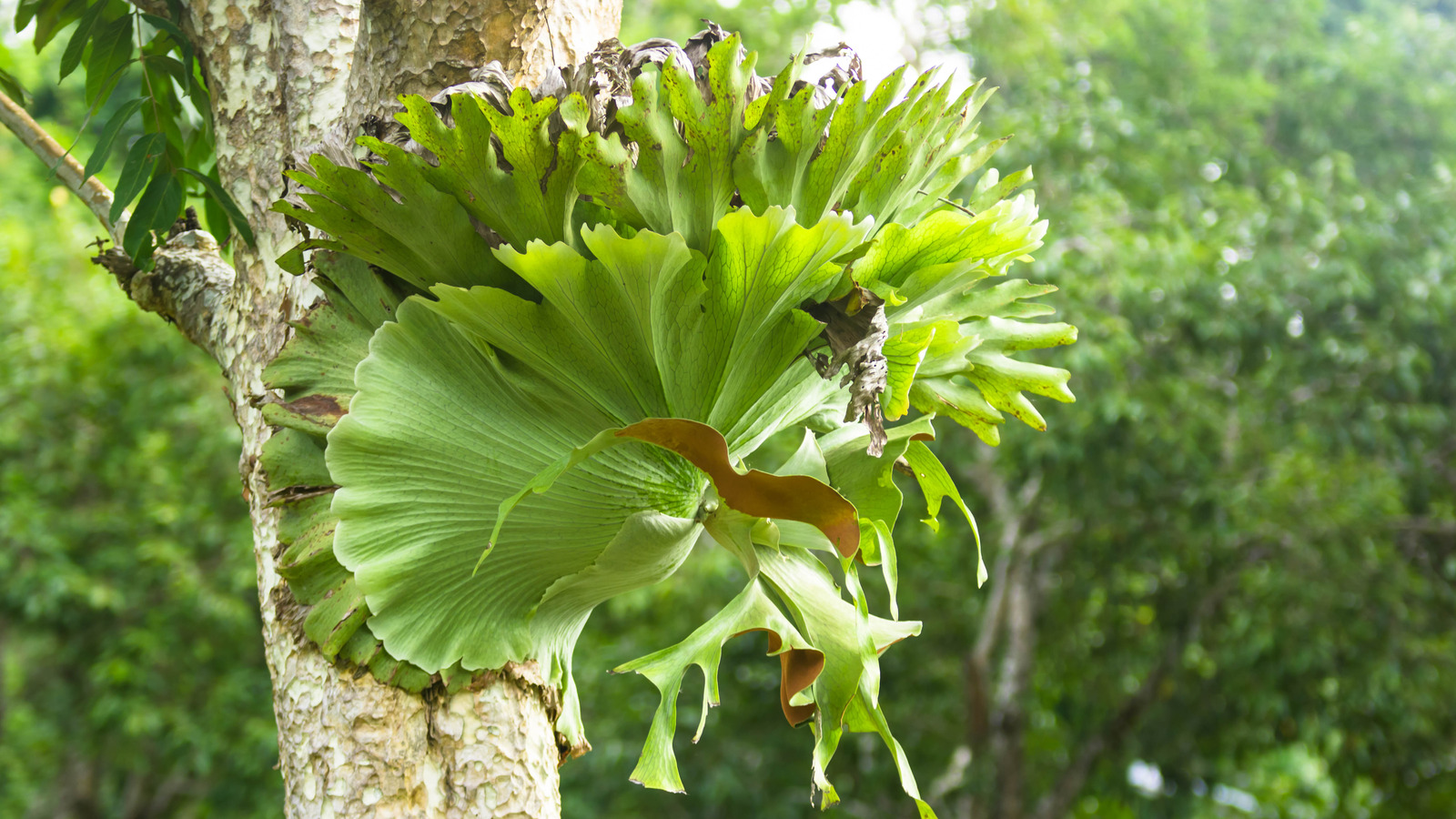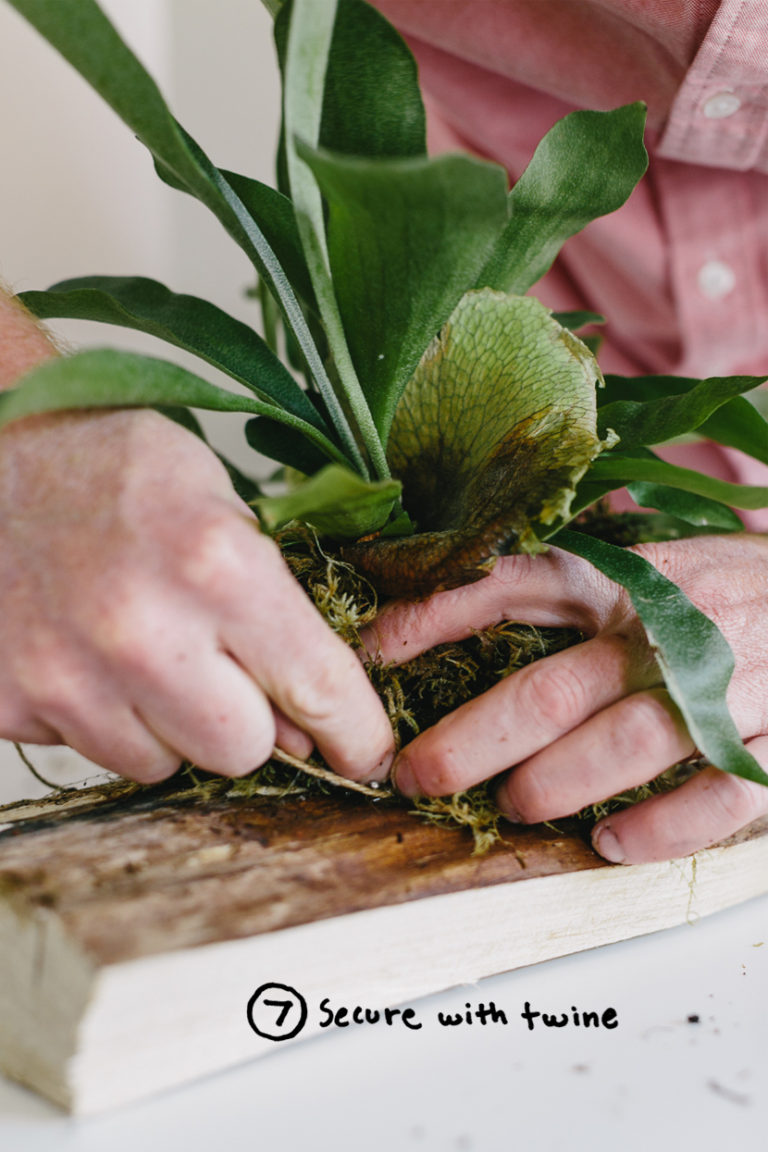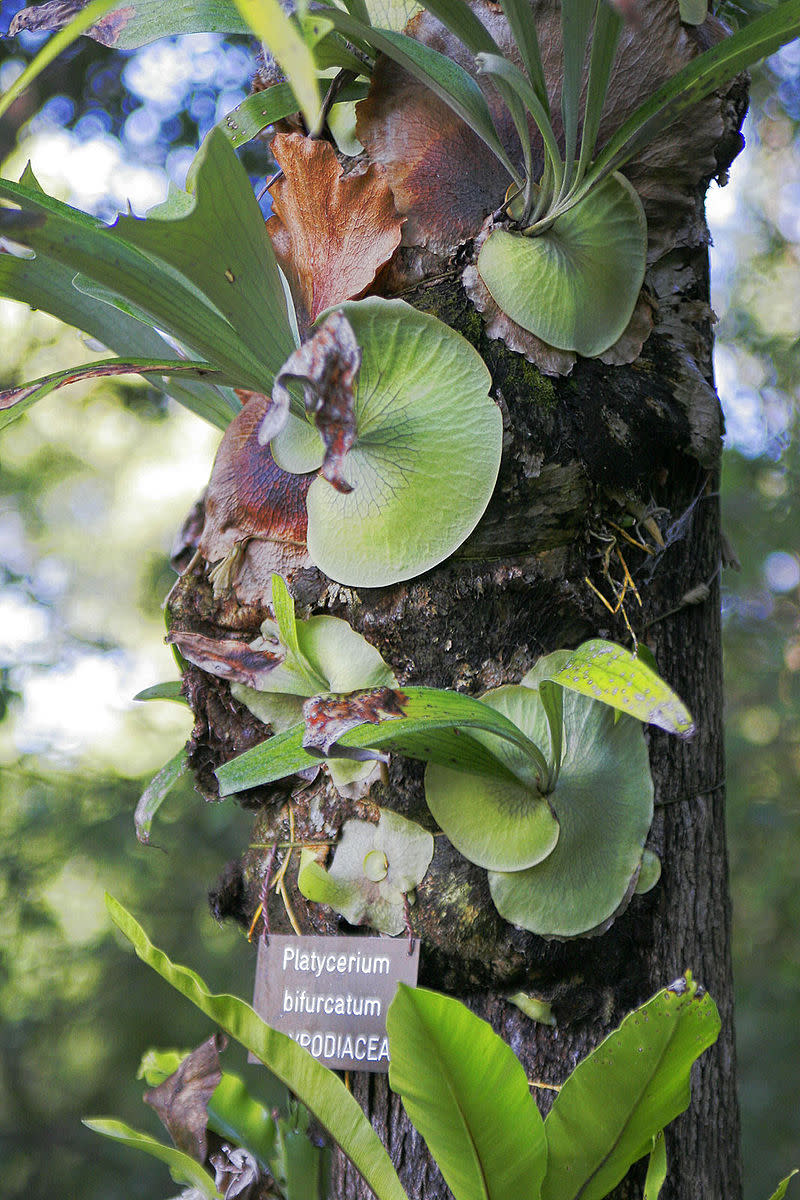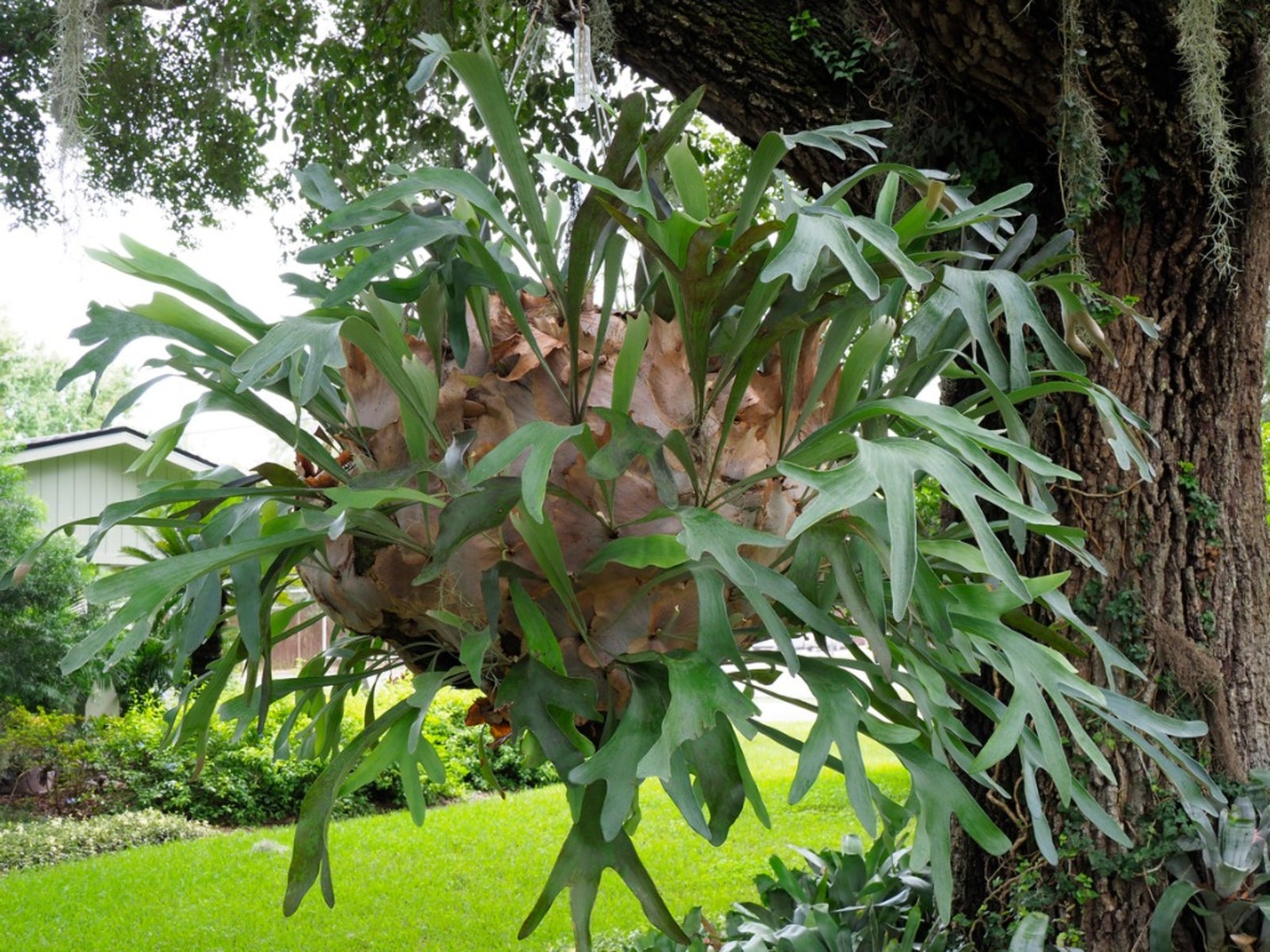Choosing the Perfect Spot for Your Staghorn Fern
When it comes to learning how to plant staghorn fern, selecting the right location is crucial for its survival and growth. Staghorn ferns thrive in environments with bright, indirect light, but direct sunlight can cause the fronds to become scorched. Ideally, a spot with east- or west-facing windows is perfect for these plants. Additionally, staghorn ferns prefer temperatures between 65°F to 75°F (18°C to 24°C), making them a great addition to indoor spaces. Humidity is also a critical factor, as staghorn ferns thrive in environments with a relative humidity of 50% to 70%. To assess the conditions in your home or outdoor space, consider using a hygrometer to measure the humidity levels and a thermometer to monitor the temperature. By choosing a location that meets these requirements, you’ll be well on your way to creating a thriving environment for your staghorn fern.
Preparing the Soil for Your Staghorn Fern
When learning how to plant staghorn fern, it’s essential to prepare the soil properly to ensure the plant’s optimal growth. Staghorn ferns require a well-draining potting mix that is rich in organic matter. A mix with a combination of peat moss, perlite, and vermiculite provides excellent drainage and aeration, which is crucial for preventing root rot. Avoid using regular potting soil, as it can retain too much water and cause the roots to rot. Instead, create a custom potting mix by combining 2 parts peat moss, 1 part perlite, and 1 part vermiculite. This will provide the perfect balance of moisture retention and drainage for your staghorn fern. Additionally, consider adding a small amount of fertilizer specifically formulated for ferns to give your plant an extra boost. By preparing the soil correctly, you’ll be providing your staghorn fern with a strong foundation for growth and development.
How to Plant Your Staghorn Fern: A Step-by-Step Guide
Now that you have prepared the perfect soil for your staghorn fern, it’s time to learn how to plant staghorn fern. Planting a staghorn fern requires careful handling of the roots and attention to detail to ensure a successful transplant. Here’s a step-by-step guide to help you get started:
Step 1: Prepare the Plant – Gently remove the staghorn fern from its pot, taking care not to damage the roots or disturb the soil. If the roots are wrapped in burlap, remove the burlap and any string or wire that may be holding it in place.
Step 2: Inspect the Roots – Inspect the roots for any signs of damage or rot. Trim away any damaged or rotten roots with sterile scissors or pruning shears to prevent the spread of disease.
Step 3: Add Soil – Place a layer of the prepared potting mix in the bottom of the pot, leaving enough space for the roots to spread out. Gently place the staghorn fern in the pot, making sure the rhizome (the thick, underground stem) is level with the soil surface.
Step 4: Add More Soil – Add more potting mix around the roots, gently firming it in place as you go. Make sure to leave enough space between the soil and the top of the pot for watering.
Step 5: Water Properly – Water the staghorn fern thoroughly after planting, making sure the soil is moist but not waterlogged. Check the soil daily to ensure it remains consistently moist but not waterlogged.
By following these steps, you’ll be able to successfully plant your staghorn fern and give it the best chance to thrive. Remember to monitor your plant’s progress and adjust your care routine as needed to ensure optimal growth.
Tips for Watering and Humidity Control
Proper watering and humidity control are crucial for the health and survival of your staghorn fern. Overwatering can lead to root rot, while underwatering can cause the fronds to turn yellow and wilt. Here are some tips to help you get it right:
Watering Frequency – Water your staghorn fern when the top 1-2 inches of soil feel dry to the touch. This is usually every 1-2 weeks during the spring and summer months when the plant is actively growing. During the fall and winter months, reduce watering to once every 3-4 weeks.
Checking for Moisture – Check the soil moisture by sticking your finger into the soil up to the first knuckle. If the soil feels dry, it’s time to water. If it’s already moist, wait a few more days before watering again.
Humidity Control – Staghorn ferns thrive in humid environments with a relative humidity of 50-70%. To maintain the right level of humidity, you can place the pot on a tray filled with water and pebbles or use a humidifier nearby. Grouping plants together can also help create a microclimate with higher humidity.
Avoiding Overwatering – To avoid overwatering, make sure the pot has good drainage holes to prevent waterlogged soil. Also, avoid getting water on the rhizome or crown of the plant, as this can cause rot and decay.
Monitoring for Signs of Stress – Keep an eye on your staghorn fern’s leaves and fronds for signs of stress, such as yellowing, wilting, or browning. If you notice any of these signs, adjust your watering and humidity control accordingly.
By following these tips, you’ll be able to provide your staghorn fern with the right amount of water and humidity, ensuring it thrives and remains healthy.
Fertilizing Your Staghorn Fern for Optimal Growth
Fertilizing your staghorn fern is essential for promoting healthy growth and development. Staghorn ferns are epiphytes, which means they absorb nutrients and moisture from the air, rather than through their roots. Therefore, they require a balanced fertilizer that provides essential nutrients for optimal growth.
Type of Fertilizer – Use a balanced, water-soluble fertilizer that is specifically formulated for ferns and other tropical plants. Avoid using fertilizers that are high in nitrogen, as they can cause excessive growth and weaken the plant.
Fertilization Frequency – Fertilize your staghorn fern every 2-3 weeks during the growing season (spring and summer). Dilute the fertilizer to half the recommended strength to avoid burning the roots. During the dormant season (fall and winter), reduce fertilization to once a month.
How to Fertilize – Water your staghorn fern thoroughly before fertilizing. Then, apply the fertilizer solution to the soil, making sure to avoid getting any on the fronds or rhizome. Water the plant again after fertilizing to help the nutrients reach the roots.
Avoiding Over-Fertilization – Over-fertilization can cause more harm than good to your staghorn fern. Avoid fertilizing too frequently, as this can lead to an overabundance of nutrients that can damage the plant. Also, be cautious not to over-concentrate the fertilizer solution, as this can cause root burn.
By following these guidelines, you’ll be able to provide your staghorn fern with the necessary nutrients for optimal growth and development. Remember to always follow the instructions on the fertilizer package and take necessary precautions to avoid over-fertilization.
Pest Control and Common Problems to Watch Out For
As a staghorn fern owner, it’s essential to be aware of common pests and problems that can affect your plant’s health. By identifying and addressing these issues early on, you can prevent damage and ensure your staghorn fern thrives.
Common Pests – Spider mites, mealybugs, and scale are common pests that can infest staghorn ferns. These pests can cause yellowing or browning of the fronds, and can lead to root rot if left untreated. To control pests, use insecticidal soap or neem oil, and isolate infested plants to prevent the spread of the infestation.
Root Rot – Root rot is a common problem in staghorn ferns, caused by overwatering or poor drainage. To prevent root rot, ensure your pot has good drainage holes, and avoid getting water on the rhizome or crown of the plant. If you notice signs of root rot, such as soft or mushy roots, repot the plant in fresh, well-draining soil.
Frond Damage – Frond damage can occur due to physical injury, pests, or diseases. To prevent frond damage, handle your staghorn fern with care, and inspect the plant regularly for signs of pests or diseases. Remove any damaged or dead fronds to prevent the spread of disease and encourage healthy growth.
Signs of Stress – Staghorn ferns can exhibit signs of stress, such as yellowing or browning of the fronds, droopy leaves, or slow growth. To address signs of stress, adjust the plant’s environment by providing more light, adjusting the temperature, or increasing humidity. Fertilize your staghorn fern regularly to provide essential nutrients for healthy growth.
By being aware of these common pests and problems, you can take proactive steps to prevent damage and ensure your staghorn fern remains healthy and thriving. Remember to monitor your plant regularly, and take prompt action if you notice any signs of stress or infestation.
Pruning and Propagating Your Staghorn Fern
Pruning and propagating are essential steps in maintaining the health and beauty of your staghorn fern. By removing dead or damaged fronds and propagating new plants, you can encourage healthy growth and create a lush, thriving environment.
Pruning – Prune your staghorn fern regularly to remove dead or damaged fronds. This will help prevent the spread of disease and encourage new growth. Use clean, sharp scissors or pruning shears to remove any damaged or dying fronds, making sure to cut at the base of the frond. Remove any dead or dying plant material to prevent decay and promote healthy growth.
Propagating from Spores – Staghorn ferns can be propagated from spores, which are found on the underside of the fronds. To propagate from spores, collect the spores and sow them on the surface of a pot filled with a well-draining potting mix. Keep the soil consistently moist and warm, and new plants will begin to grow.
Propagating from Divisions – Staghorn ferns can also be propagated from divisions, which involve dividing the rhizome of a mature plant. To propagate from divisions, carefully remove the plant from its pot and gently separate the rhizome into sections, making sure each section has at least one growing point. Replant the divisions in a well-draining potting mix, and keep the soil consistently moist and warm.
Tips for Successful Propagation – To ensure successful propagation, make sure to provide the right conditions for your new plants. Keep the soil consistently moist and warm, and provide bright, indirect light. Avoid overwatering, which can lead to root rot and poor growth.
By pruning and propagating your staghorn fern, you can create a thriving environment that will provide years of beauty and enjoyment. Remember to prune regularly to maintain the health of your plant, and propagate new plants to share with friends and family or to add to your own collection.
Creating a Thriving Environment for Your Staghorn Fern
To create a thriving environment for your staghorn fern, it’s essential to provide the right support, repot as needed, and monitor for signs of stress. By following these tips, you can ensure your staghorn fern remains healthy and continues to thrive.
Providing Support – Staghorn ferns can grow quite large, so it’s essential to provide support to keep them upright and stable. You can use a trellis or stake to support the plant, or attach it to a wall or fence using a wire or twine.
Repotting – Staghorn ferns typically need to be repotted every 2-3 years as they outgrow their containers. Choose a pot that is slightly larger than the previous one, and use a well-draining potting mix to prevent waterlogged soil.
Monitoring for Signs of Stress – Staghorn ferns can exhibit signs of stress, such as yellowing or browning of the fronds, droopy leaves, or slow growth. To address signs of stress, adjust the plant’s environment by providing more light, adjusting the temperature, or increasing humidity. Fertilize your staghorn fern regularly to provide essential nutrients for healthy growth.
Additional Tips – To create a thriving environment for your staghorn fern, make sure to keep the plant away from drafts and extreme temperatures. Avoid exposing the plant to direct sunlight, which can cause scorching of the fronds. By following these tips, you can create a thriving environment that will support the healthy growth of your staghorn fern.
By following these additional tips and tricks, you can create a thriving environment for your staghorn fern that will provide years of beauty and enjoyment. Remember to provide the right support, repot as needed, and monitor for signs of stress to ensure your plant remains healthy and continues to thrive. With proper care and attention, your staghorn fern will become a stunning addition to your home or outdoor space.







